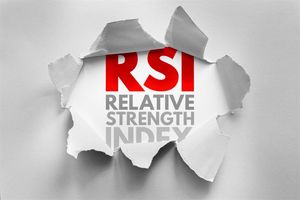Will uranium prices blow up … again?

The recent market excitement over nuclear power investments by technology companies starved for electricity has spurred a sharp run up in the price of uranium.
The demand from AI data centers and an increase in related M&A activity have propelled share prices for nuclear power companies sharply higher year-to-date. This push from the tech sector follows years of resurgent interest in the technology which culminated in 22 nations pledging to triple nuclear production in the industry at COP28 last year.
These bullish narratives for nuclear power have driven prices higher for the industry’s underlying commodity: Uranium.
Currently front-month CME uranium futures contracts have pulled back below $83 from a year-to-date peak of over $105 in February — the highest level since 2007. Even after that pullback, the price per pound for the metal has risen by over 70% in two years.
The impact on the industry has been profound with startups like Canadian company NexGen whose management has targeted production levels of 29 million pounds annually by 2030.
As of now, U.S. investors who seek to allocate uranium as a commodity are limited to futures markets. But several ETFs have come to market focused on equities engaged in the nuclear race.
Both the Global X Uranium ETF URA and the Sprott Uranium Miners ETF URNM focused on the stocks of uranium mining companies. The VanEck Uranium and Nuclear ETF NLR includes stocks of nuclear producers as well as miners.
Investors anxious to capitalize on the new nuclear bull market may be wise to reflect on uranium’s history as a speculative investment.
In the three decades following the end of World War II, uranium producers experienced a boom market, culminating in a price bubble during the energy crisis of the 1970s.
In the wake of OPEC cuts, global economies poured money into nuclear power development driving the price of uranium up by more than 500% during the first half of the 1970s. By 1981, prices had halved as investors soured on the nuclear segment.
Markets spiked again in the mid 2000s with prices reaching $136 per pound during the summer of 2007 as the “peak oil” narrative took hold. Investors again soured on the market after the Fukushima plant crisis in 2011.
More stories we’re tracking at Equities:
Enphase earnings drag down solar sector
Enphase Energy ENPH surprised markets with third-quarter earnings of $0.65 per share yesterday, significantly lower than both consensus forecasts and the same quarter last year. The disappointing data from the solar company caused a sharp selloff with shares trading 14% lower by midday on Wednesday. Other solar stocks, including Sunrun RUN also declined as investors digested Enphase’s announcement.
EU pours €4.8 billion into new carbon reduction projects
The European Commission announced a €4.8 billion investment into 85 selected projects on Tuesday. The request for proposals in 2023 drew applications from 18 nations focused on market sectors including renewable energy to net-zero mobility. The projects are set to be financed through the Innovation Fund, which is capitalized through carbon trading fees.
Department of Agriculture energy program announces investments
The Department of Agriculture announced on Monday that it will back five renewable energy projects in rural Iowa with a $2.2 million allocation from the Rural Energy for America program (REAP). The department rolled out REAP last week as a $600 energy investment program for agricultural regions administered by the USDA.
Read more: ESG fund performance driven by the same AI names as the rest
More News
View More



Recent Quotes
View More
Quotes delayed at least 20 minutes.
By accessing this page, you agree to the Privacy Policy and Terms Of Service.